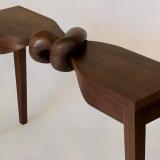Russ Riddle Designs
Artist directory :: Russ Riddle DesignsCreative studio furniture designs made by hand in Washington with rare local woods, marquetry and inlay.
About
I design and create studio furniture in my shop on Camano Island, Washington, where I get to enjoy spectacular sunsets.
I make custom furniture on commission and also distribute my work through various galleries and art fairs. I am a one-man studio and build one-of-a-kind pieces and some limited productions.
I am a largely self-taught woodworker. I grew up loving to build things and exploring the natural world. I made my first furniture when I was 12, but my interest in nature diverted my career path in other directions. While I made many pieces of furniture through the years, I did not start making and selling gallery and custom woodwork until I retired. Since 2005 I have sold my art in many galleries around Washington, in a variety of art shows,...
Galleries
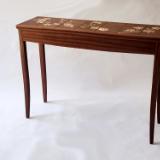 | | 4 items |
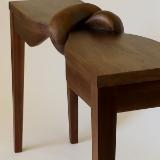 | | 8 items |
 | | Free standing and wall cabinets
|
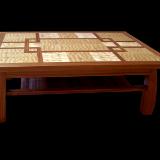 | | Three styles of Asian inspired tables
|
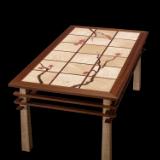 | | Tables with marquetry or inlay
|
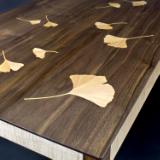 | | Furniture with a Ginkgo theme
|
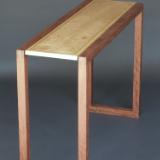 | | Entry way, hall way, and sofa tables
|
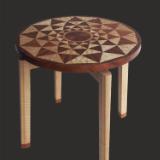 | | Tables in a variety of styles and sizes.
|
 | | Furniture with an unmachined natural or "live" edge tends to connect us closer to nature. Mixing machined and natural edges creates a tension that encourages us to reflect on the role of nature vs. |
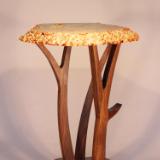 | | Tables with extraordinary burl slab tops and sculpted bases. Use as entry, console or pedestal table.
(See blog for more info)
|
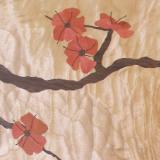 | | Marquetry and inlay are techniques of embedding one piece of wood into another to create a figure, like a leaf, flower or bird.
I often use marquetry or inlay techniques to communicate my vision for a work. I don't use the marquetry simply as an add-on embellishment but as a focal point for interpreting the work. The marquetry tells the story of what inspired me and what I hope inspires others. |
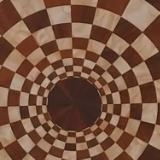 | | Parquetry is a geometric form of marquetry. I have used this technique as a means to explore and expand the interactions of light with figured wood, to explore optical illusions, and as a metaphor for life.
|
 | | These turnings and other items were all made from a single tree from Camano Island. The tree had many, many burls. It was rotting in the center and had to be removed. |
Blog
AngstThis table has generated diverse interpretations from fans. That's great. I've also been asked about my inspiration. Here is the story about how it came to be.
I finished this table in May of 2019. There was a lot going on then as you may recall. We had a President who totally altered the norms of behavior, calling people names, lying constantly, cozying up to dictators, promoting conspiracy theories, and so forth. But it didn't just end with this man. It spread like Covid to others, such as the pundits...Rosette Table
I made this table a couple of years ago but didn’t get around to writing about it because of health issues. It came about because I had been thinking about doing something to do with a marine theme and also something “op artish.” I wondered if the wood textures would add or subtract from the figure and if there would be enough contrast.
Sprials are fascinating and beautiful and all over the biological world.
Trees of Harmony
I am excited to be introducing my newest work at the 2017 Camano Arts Association Studio Tour on Camano Island on Mother’s Day Weekend (May 12-14) and the following weekend (May 20-21). I call this series of tables Trees of Harmony .
I took a more sculptural approach with these tables than in my previous work, departing from the usual furniture pattern of four legs, apron, symmetry, etc.
Natural edges and Spalted Wood
I’ve said before that my furniture is about the wood. Many of my pieces have “imperfections,” such as knots, that would not be acceptable in mass produced furniture that seeks uniformity, not to mention special figure, burl and sapwood. These properties make the piece speak of its natural origins.
Using inlay and marquetry
Inlay and marquetry can be an extremely effective method of drawing attention and creating focus, and most importantly for me as designer, a visual reference or context in which to design the piece. It seems like a traditional use of inlays in furniture was simply to make a piece less plain, such as adding a border of Acanthus leaves might do. I haven’t used inlay in this way for a couple of reasons.
